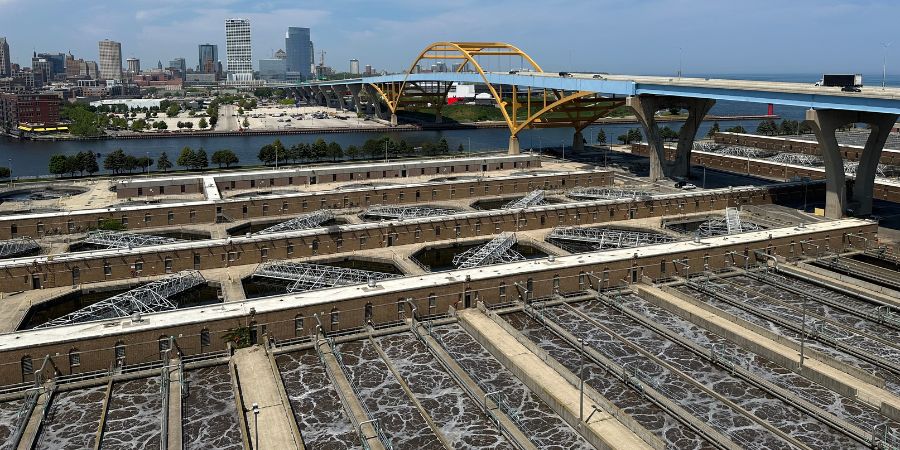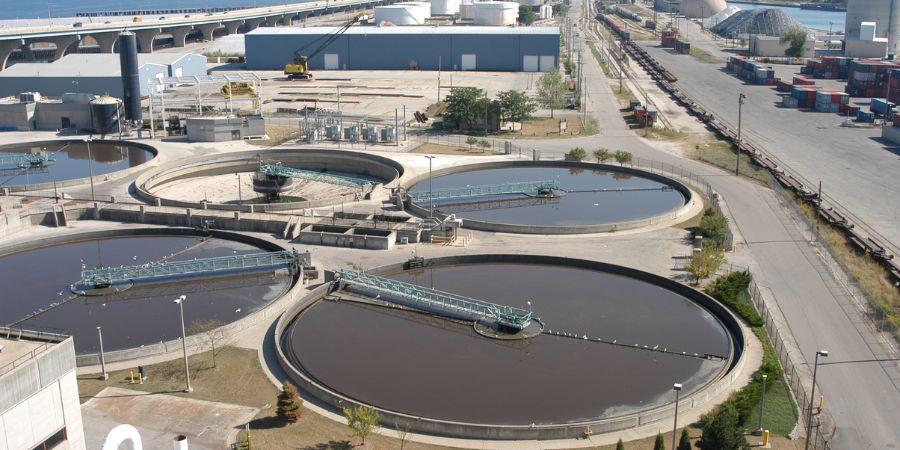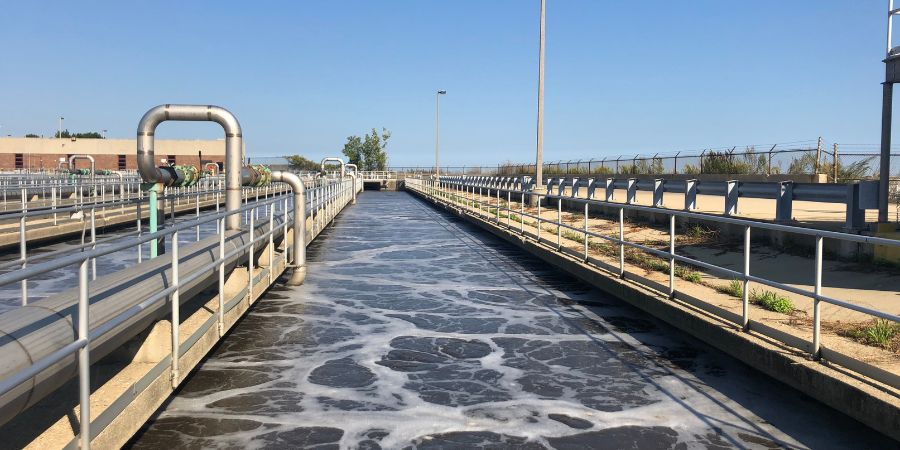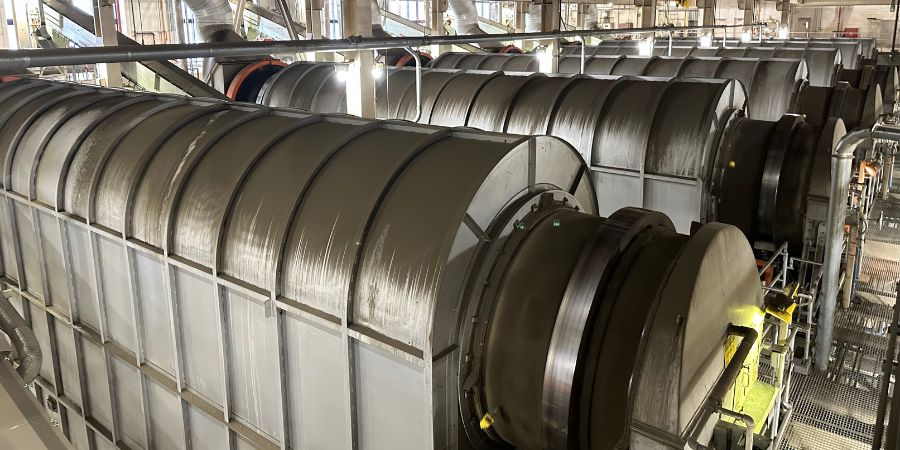How is Milorganite Made?
- Milorganite AgronomistMarch 16, 2024
How is Milorganite made? Well, we really don’t “make” Milorganite. It’s actually a byproduct of the Milwaukee Metropolitan Sewerage District’s (MMSD) water reclamation process: treating wastewater for safe a return to Lake Michigan. Toward the end of the process, the nutrient-rich solid material and the clarified water go their separate ways. With an additional kiln-drying process, the material becomes Milorganite. The clarified water is disinfected and returned to Lake Michigan.

Jones Island Water Reclamation Facility, which makes Milorganite Fertilizer, in Milwaukee, WI
Milorganite was first produced in 1926 to improve public health, water quality, and the environment. It’s one of the nation’s oldest recycling programs. Here, we recycle nutrients instead of paper, glass, and plastic.
The “ingredients” in Milorganite are heat-dried microbes that have digested the organic nutrients in wastewater. No matter what anyone says, it’s NOT a bag of poop. So, if Milorganite isn’t poop in a bag, what is it? It’s a bag of heat-dried microbes.
Nearly 100 years later, Milwaukee’s wastewater treatment process and the resulting Milorganite are still made using the same large-scale, biological process that mimics nature. However, we now incorporate renewable energy into our operations, such as landfill gas, a local renewable energy source recycled into power, and methane gas produced by the digesters, which helps us avoid purchasing over a million dollars of natural gas each year.
Screening Out Solid Materials
The first step in the water reclamation process is removing debris from the wastewater. Large and small objects, such as towels, wipes, plastics, sand, and gravel, are removed.
This is why we emphasize the importance of only flushing the 3 P’s – pee, poo, (toilet) paper!
Tightly spaced bars strain out any debris that’s ¼” or larger. Grit and sand are removed using centrifugal force, which helps to prevent equipment damage down the line. After the wastewater has gone through the initial screening process, it is pumped into the settling tanks, also known as primary clarifiers or sedimentation tanks.
Primary Clarifiers: Skim Off Fats, Oils, and Grease

Clarifiers (sedimentation tanks) remove fats, oils, and grease
The settling tanks are very large, round, open-air tanks that are used to remove fats, oils, and grease that float to the top of the tank.
Solid materials, settled to the bottom, are also removed. This is done as part of the water reclamation process, as well as to help prevent equipment damage down the line.
After skimming off the fats, oils, and grease, the wastewater is pumped into aeration basins for biological treatment.
Keeping the "Bugs" Fat and Happy
Billions of naturally occurring microbes, which we call “bugs,” are introduced into the aeration basins. With the help of introduced oxygen (air), the microbes ingest and break down the nutrients found in the organic material that remains in the wastewater.
A brief note on “organic.” The term “organic” has varying definitions in different settings. Here, we’re not talking about horticulture practices that only use organic materials. Here, the term “organic” refers to any carbon-based material or compound, which also contains hydrogen, and may come from living or non-living sources. The nitrogen in Milorganite is derived from naturally occurring sources of organic material.
Okay, back to the process.

Aeration basins where billions of naturally occurring microbes eat the organic material in the wastewater.
Air is pumped through the water to maintain an environment the bugs need to prosper. The bubbling air expedites the process that would naturally occur in nature.
After the bugs consume the nutrients in the organic material and there is nothing left to eat, they increase in size and, thus, eventually clump together and settle to the bottom of the basins.
This is where the paths of water reclamation and future Milorganite diverge. The solid material—all the bugs—is harvested from the water.
The now clarified water is disinfected with chlorine to kill any remaining pathogens and is then de-chlorinated. It’s important that the water is de-chlorinated as chlorine, even at low levels, is toxic to aquatic life. The water is then released into Lake Michigan.
Squeezing Out the Water, Heat-Drying the "Bugs"
The clumped, nutrient-rich bugs, now known as biomass, are harvested, dewatered, and dried.
Belt presses squeeze water from the biomass. The resulting material is semi-solid and resembles wet cardboard.
The still-wet material is sent to one of 12 bus-sized, rotating kilns, which can reach temperatures of 900–1,200 F. The internal temperature of the dried material has to be above 176 F to kill off pathogens. The familiar Milorganite pellets are created from the constant movement during the kiln-drying process.

The rotating kilns or "dryers" heat-dry Milorganite into pellets.
After final testing to ensure all EPA requirements have been met, what is now Milorganite is bagged and sold throughout the United States. Milorganite’s safety standards meet the most stringent criteria placed on all fertilizer products, making Milorganite safe to use when used as directed on your lawn, landscape, and garden.

